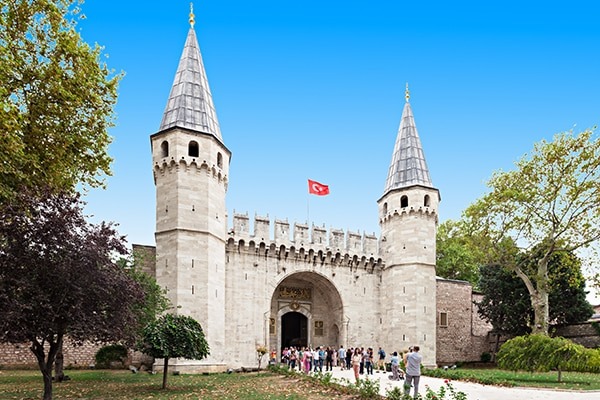The magnificent Topkapi Palace stands as a timeless emblem of Istanbul's illustrious past. This sprawling complex, steeped in history and grandeur, offers a fascinating journey through the annals of Turkish heritage. From its humble origins to its zenith as the opulent abode of Ottoman sultans, Topkapi Palace has witnessed centuries of intrigue, power, and cultural evolution.
Origins: A Glimpse into the Past
The story of Topkapi Palace traces back to the 15th century when Mehmed the Conqueror, the visionary Ottoman Sultan, sought to establish a grand residence befitting his imperial stature. In 1459, construction began on what would soon become the epicenter of Ottoman power. Strategically positioned overlooking the Golden Horn, the palace boasted unparalleled views of Istanbul and its bustling waterways.
Construction: A Marvel of Ottoman Architecture
Over the years, successive sultans expanded and embellished Topkapi Palace, adding layers of architectural splendor to its already majestic facade. The complex, designed to accommodate the multifaceted demands of imperial life, features a labyrinth of courtyards, pavilions, and gardens, each exquisitely crafted to reflect the opulence of the Ottoman era.
From the imposing gates of Bab-ı Hümayun to the tranquil elegance of the Fourth Courtyard, every corner of Topkapi Palace bears testament to the ingenuity and craftsmanship of its builders. Intricate tilework, ornate domes, and majestic arches adorn the palace, creating a mesmerizing blend of Byzantine, Persian, and Islamic architectural styles.
Significance: The Heart of Ottoman Power
Topkapi Palace not only served as the residence of the Ottoman sultans but also functioned as the administrative and cultural nucleus of the empire. Within its hallowed halls, decisions of state were made, diplomatic alliances forged, and the rich tapestry of Ottoman culture flourished.
The Seat of Power: Life Within the Palace Walls
For over four centuries, Topkapi Palace stood as the nerve center of Ottoman governance. Behind its fortified walls, sultans held court, surrounded by a retinue of advisors, officials, and concubines. Lavish ceremonies, sumptuous feasts, and intricate rituals were commonplace, as the palace buzzed with the energy of imperial authority.
Cultural Patronage: Nurturing Art and Innovation
Beyond its political significance, Topkapi Palace was a beacon of artistic and intellectual achievement. The royal patronage extended to scholars, artists, and artisans, fostering a vibrant cultural milieu within its confines. From exquisite manuscripts to masterful ceramics, the palace collections became a testament to the creative ingenuity of the Ottoman Empire.
Legacy: Preserving the Past for Future Generations
Today, Topkapi Palace stands as a living testament to Turkey's rich historical legacy. Open to the public as a museum since 1924, the palace welcomes visitors from around the world to marvel at its treasures and unravel the mysteries of its storied past.
Exploring Topkapi Palace: A Journey Through Time
Visitors to Topkapi Palace are transported back in time, as they wander through its labyrinthine corridors and opulent chambers. From the glittering treasures of the Imperial Treasury to the serene beauty of the palace gardens, every corner offers a glimpse into the splendor of Ottoman life.
Before embarking on your journey to Topkapi Palace, it's essential to plan ahead. Secure your Topkapi Palace tickets in advance to avoid long queues and ensure a seamless experience. Once inside, take your time to explore the palace at your leisure, soaking in the rich history and architectural marvels that await around every corner.
Conclusion: A Jewel in Istanbul's Crown
In the heart of Istanbul, amidst the bustling streets and ancient landmarks, Topkapi Palace stands as a timeless testament to the grandeur of the Ottoman Empire. From its humble origins to its enduring legacy, the palace continues to captivate the imaginations of visitors, offering a glimpse into a bygone era of opulence, power, and cultural splendor. As you wander through its hallowed halls and verdant gardens, allow yourself to be transported back in time, to an age of emperors and empires, where history comes to life in all its magnificent glory.





Comments